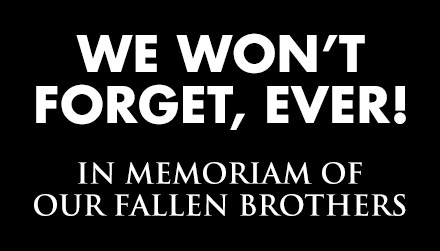The VII Corps Desert Storm Veterans Association (DSVA) was launched informally in 1995 to remember those who gave the last full measure, to preserve and foster camaraderie, to provide charitable assistance, and to foster camaraderie between VII Corps Veterans and Families. The Association founders’ intent was also to provide a forum for soldiers and families who served in the VII Corps during Operations Desert Shield/Desert Storm to network and preserve shared memories.
After an initial informal get together at a local Arlington, Virginia restaurant in February 1995 the Association was officially established in 1996. Since then we have sponsored an annual event to honor our fallen soldiers with a Memorial Service during which we read the names of each of those VII Corps soldiers who gave the last full measure. Our Memorial Service is then followed by a Reunion Dinner that supports the other activities of the Association. In 1997 we awarded the first scholarships to immediate family members of VII Corps DSVA soldiers and as of 2015 we have provided over $360,000 in college tuition assistance to more than 130 soldiers and family members. Over the years we have been fortunate to have many distinguished Soldiers and leaders who served with us or were key to the success of Operation Desert Storm. Speakers at our Reunion dinners included former President George H. W. Bush, former Secretary of Defense Dick Cheney, former Chairman of the Joint Chiefs of Staff General Colin Powell, and many VII Corps veterans like General Martin Dempsey, General Dave McKiernan, General Ray Odierno, and our own General Fred Franks, as well as other great Soldiers like Army Chief of Staff General Eric Shinseki and Vice Chief of Staff of the Army General Jack Keane.
All of the support of the Association, both financial and operational, is provided by volunteers, both individual and corporate. Several corporations in the defense industry provided important scholarship financial support at various times. In addition to the annual Memorial Service and Reunion Dinner the Association sponsors a golf tournament each September to help raise funds for the scholarship program. The Association recently initiated a social media effort to expand its reach by using Facebook and by developing an interactive web page to increase and enhance contact with VII Corps veterans everywhere.
The VII Corps Desert Storm Veterans Association (DSVA) is a tax exempt organization under IRS Code 501(c)(19). It was formed for members of VII Corps who served in Desert Storm, including military, civilian, and family members who served with us in the desert or supported us in Germany. All contributions less actual expenses go to support the VII Corps DSVA Scholarship Program.




